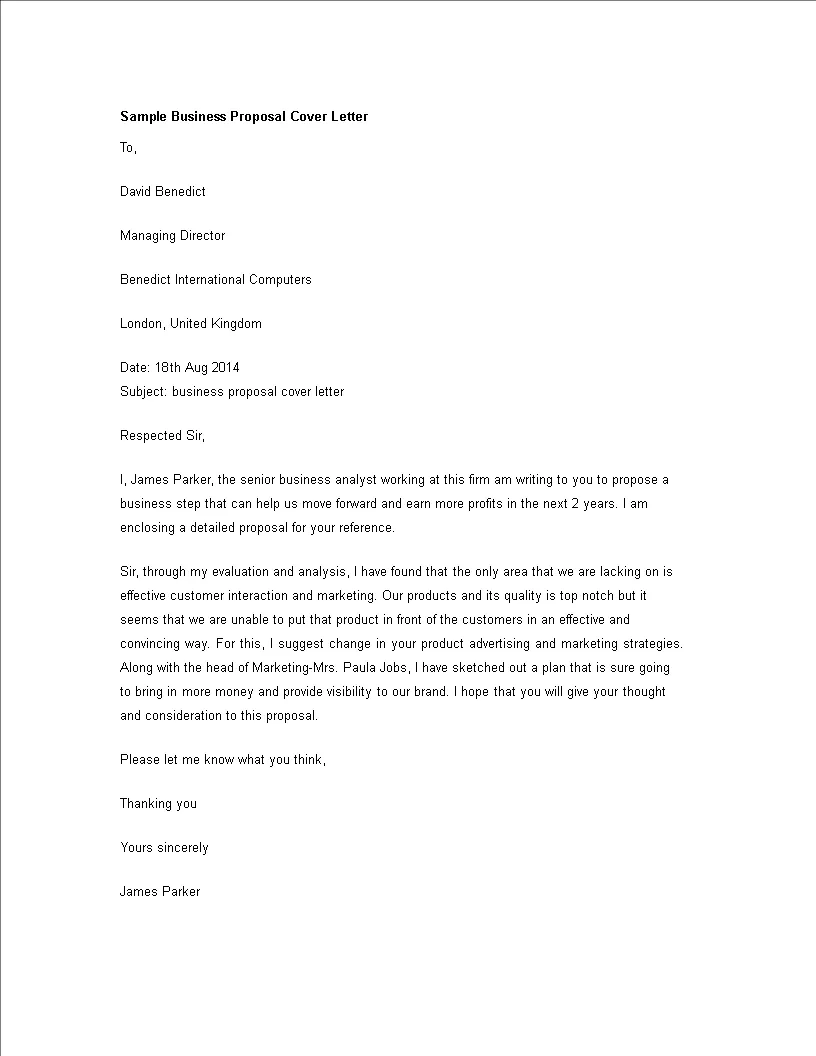The Power of a Cover Letter in Business Proposals
In the competitive landscape of business, a well-crafted proposal can be the gateway to securing a deal, winning a contract, or gaining crucial funding. However, the proposal itself is only part of the equation. A compelling cover letter often serves as the first point of contact, setting the tone and making a crucial first impression. It’s the handshake, the initial pitch, and the opportunity to captivate the reader before they delve into the details of your proposal. It’s the narrative that frames your solution and highlights why your offering stands out. A strong cover letter doesn’t just summarize the proposal; it sells it, leaving the recipient eager to learn more. A well-executed cover letter can significantly increase the likelihood of a positive response, making it a vital component of any successful business proposal.
Why a Cover Letter Matters
A cover letter serves several critical functions. Firstly, it provides context. It tells the recipient why they are receiving the proposal and what problem or opportunity it addresses. Secondly, it establishes a connection. It’s an opportunity to demonstrate that you understand their needs and have tailored your proposal to meet them. Thirdly, it builds credibility. It showcases your professionalism, expertise, and understanding of the recipient’s requirements. The cover letter can also highlight key differentiators setting your offering apart from competitors. Ultimately, it can be the catalyst that transforms a potential client’s interest into action. It also helps the reader understand the main message and the goals of the proposal.
First Impressions
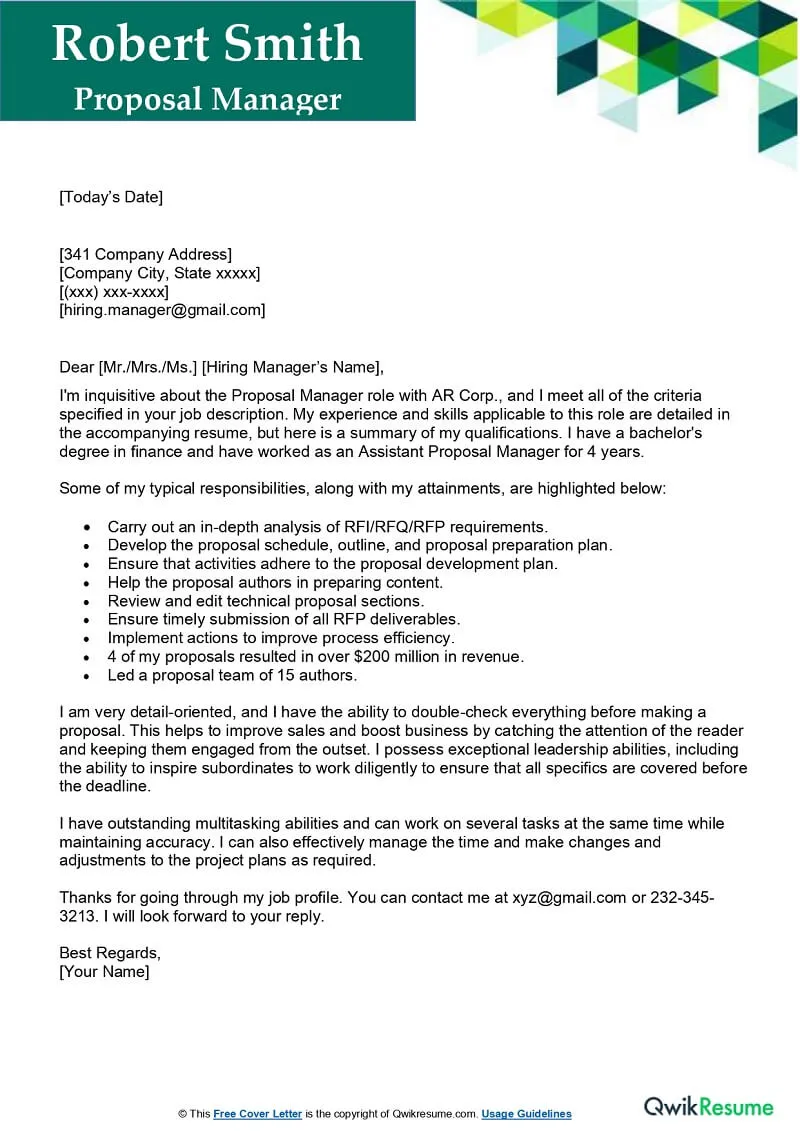
The opening of your cover letter is crucial. This is where you make that all-important first impression. Start with a strong, concise statement that immediately grabs the reader’s attention. Briefly state the purpose of your proposal and, if possible, mention something specific about the recipient or their organization. Avoid generic greetings; instead, personalize the letter to show you’ve done your homework. A powerful opening quickly communicates the essence of your proposal and positions you as a credible, insightful partner. Use clear, concise language and avoid jargon or overly complex sentences. The goal is to make a positive impact from the outset, setting the stage for a successful proposal review.
Highlight Key Benefits
While the proposal itself details the specifics, the cover letter should highlight the key benefits of your offering. Focus on what the recipient will gain by choosing you. This could be increased efficiency, cost savings, improved outcomes, or any other value proposition that aligns with their needs. Use strong verbs and impactful language to emphasize these benefits. Quantify your claims whenever possible, providing data or examples to support your statements. Demonstrate how your solution solves their specific challenges and delivers a positive return on investment. The cover letter is the place to make a compelling case for why the recipient should invest their time and resources in your proposal.
Top 5 Proposal Tips for Cover Letters
Tip 1 Tailor to the Recipient

One of the most critical aspects of an effective cover letter is personalization. Generic letters often get overlooked. Tailor your cover letter to each recipient and proposal. Research their organization, understand their needs, and address their specific pain points. Mention their name, use their company’s language, and demonstrate that you understand their challenges. The more personalized your letter is, the more likely it is to resonate with the reader. Customization shows that you value their business and have taken the time to understand their specific requirements. Show the reader that you are not just sending a standard template; you are offering a custom solution to their unique challenges.
Tip 2 Focus on Value Proposition
Clearly communicate the value you bring to the table. What makes your offering stand out? How will it benefit the recipient? Focus on the results you can deliver, such as increased revenue, cost savings, or improved efficiency. Highlight the unique selling points of your proposal and differentiate yourself from the competition. Explain how your solution aligns with the recipient’s goals and objectives, demonstrating that you understand their needs and can deliver a successful outcome. Ensure the value proposition is clear, concise, and easy to understand, compelling the reader to explore your proposal further. Make it clear why they should choose you.
Tip 3 Keep It Concise
Keep your cover letter brief and to the point. The recipient is likely busy, so respect their time by presenting your message efficiently. Aim for a single page, or two at most. Use clear, concise language, and avoid unnecessary jargon or complex sentences. Focus on the most important information and get to the point quickly. Use bullet points and formatting to break up text and make it easier to read. A concise cover letter shows that you value the recipient’s time and respect their need for clarity. It also highlights the key points, preventing the reader from getting lost in excessive detail. The more streamlined the presentation, the more likely the message will be received.
Tip 4 Showcase Your Expertise
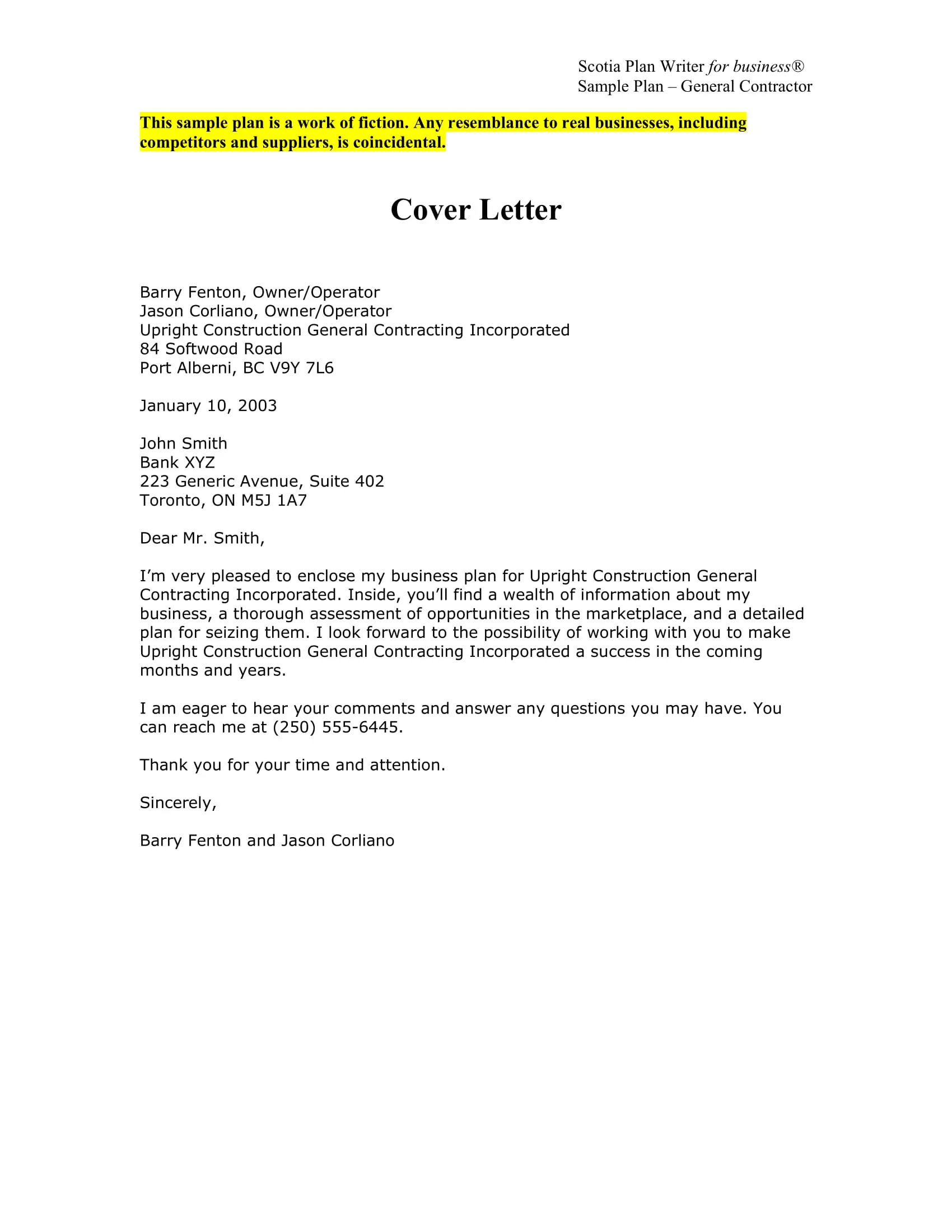
Use the cover letter to demonstrate your expertise and credibility. Highlight relevant experience, qualifications, and achievements. Mention any awards, certifications, or testimonials that support your claims. Provide quantifiable results whenever possible, showcasing your past successes. This will help the recipient understand the value you bring to the table. By emphasizing your expertise, you build trust and establish yourself as a reliable partner. Be specific about how your experience aligns with the recipient’s needs and demonstrate that you are the best choice for their project. Prove that you can deliver what you promise.
Tip 5 Call to Action
Include a clear call to action, telling the recipient what you want them to do next. Do you want them to schedule a meeting, review the proposal, or contact you with questions? Make it easy for them to take the next step. Provide your contact information and make it clear how they can reach you. A strong call to action helps to move the proposal forward, guiding the recipient toward a decision. This reinforces your commitment and facilitates the engagement process. If possible, make a specific suggestion for the next step, ensuring the recipient knows exactly what’s expected of them.
Formatting and Style
Professional Tone
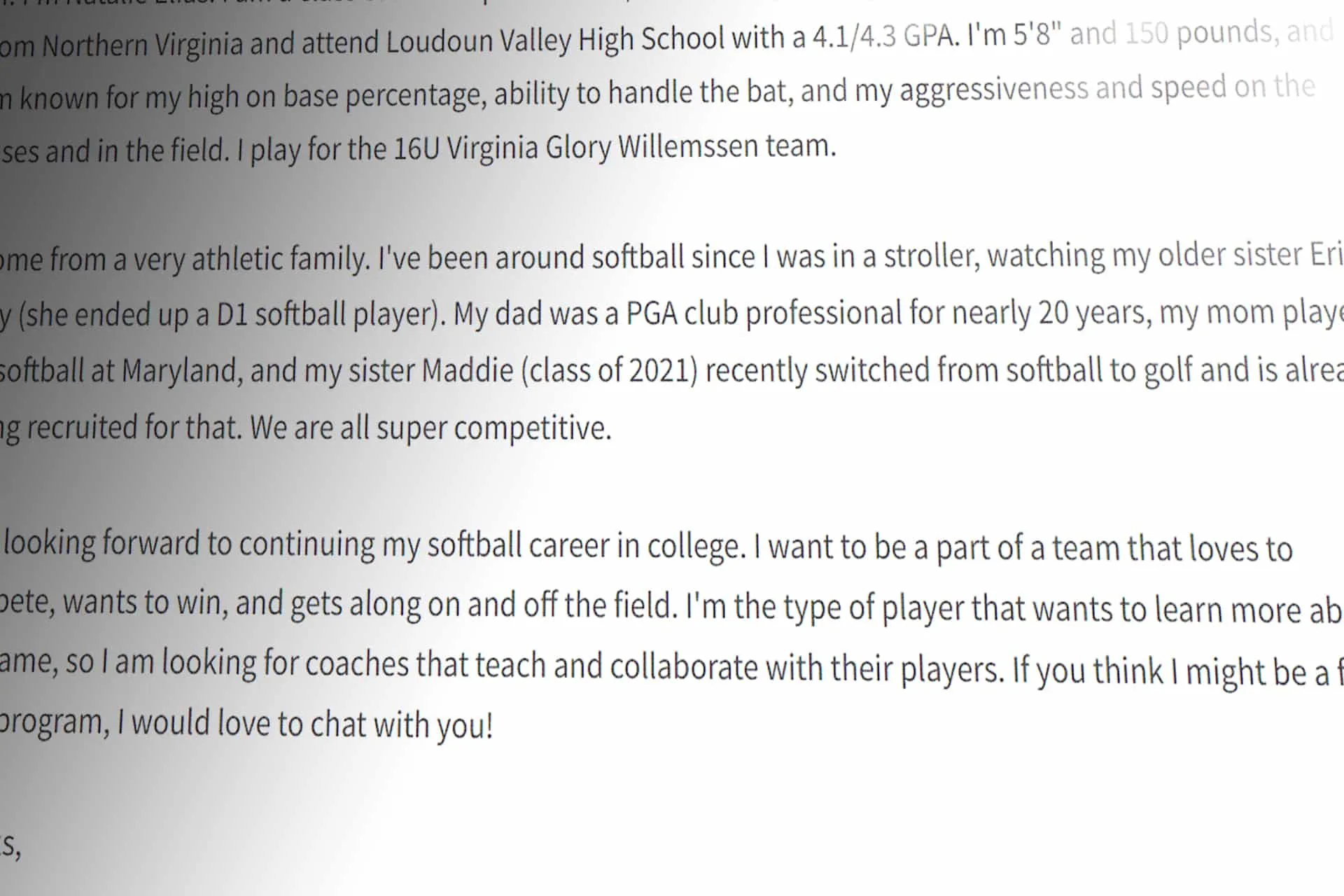
Maintain a professional tone throughout your cover letter. Use formal language, avoid slang or colloquialisms, and maintain a respectful demeanor. Ensure your writing is clear, concise, and error-free. The tone sets the impression about your business. It reflects your brand and how you conduct business. Show the reader that you value professional communication. Your choice of words, sentence structure, and overall presentation should communicate your credibility, integrity, and attention to detail. A professional tone helps build trust and makes a positive impression.
Proofreading is Crucial
Always proofread your cover letter carefully before sending it. Errors in grammar, spelling, or punctuation can damage your credibility. A well-proofread letter demonstrates attention to detail and a commitment to quality. Use a grammar checker and have someone else review your letter for any mistakes. Mistakes can lead the reader to question your professionalism and may also be perceived negatively. Take the time to eliminate errors before it leaves your hands. Proper proofreading is essential to ensure your message is conveyed effectively and accurately.
Common Mistakes to Avoid
Generic Letters
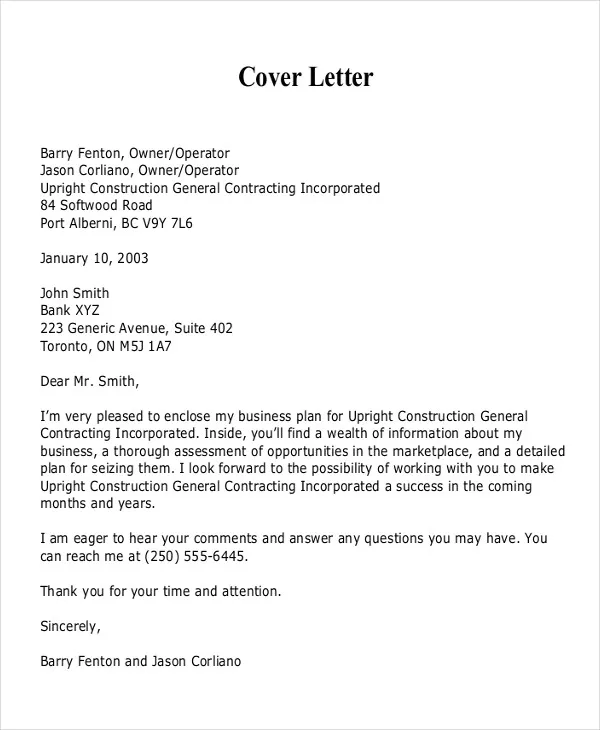
Avoid using generic cover letters that could be sent to anyone. Customize your letter for each recipient and proposal. Generic letters demonstrate a lack of effort and attention to detail, potentially damaging your chances of success. The more effort you put into personalization, the more likely you are to make a positive impression. Tailor the content to show that you understand the recipient’s needs. Make sure the reader feels like the proposal is specially designed for them.
Ignoring the Proposal Guidelines
Always follow the guidelines provided in the request for proposal (RFP) or instructions. Ignoring these guidelines may lead to your proposal being rejected. Make sure you understand the requirements, formatting, and submission instructions. A clear understanding will show professionalism and respect for the recipient’s process. Failing to follow instructions signals that you pay little attention to details. Also make sure you have addressed the key points that are being sought.
Lack of Personalization
Failing to personalize your cover letter can be a major mistake. This shows that you have not taken the time to understand the recipient’s needs or tailor your offering to their specific requirements. Take time to customize your approach and address the specific challenges the recipient faces. Personalization increases your chances of success. It shows a commitment to their business and a genuine interest in building a relationship. Personalize every letter to boost your chances of being successful.
